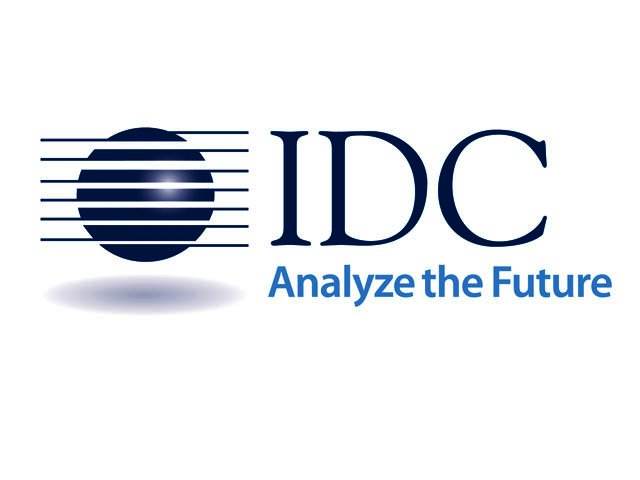IDC - smartphones shipment boost mobile phone market
By Hanleigh Daniels 29 October 2012 | Categories: news
Market analytics company IDC (International Data Corporation) has provided an analysis of the third quarter 2012 performance of the mobile phone market. According to the latest data from the IDC’s worldwide quarterly mobile phone tracker service, vendors shipped 444.5 million mobile phones during Q3 2012, up from 434.1 million units within Q3 2011. When it comes to smartphones, there were 179.7 million units shipped in Q3 2012, culminating in a more significant 45.3% year-over-year increase over Q3 2011’s 123.7 million.
IDC stated that the global mobile phone market increased by 2.4% year-on-year during the quarter, on the back of stellar smartphone shipment performances from Samsung and Apple. This dominating duo is putting many other smartphone makers under pressure, most notably Nokia, which did not make it onto the Top 5 smartphone vendor list for this past quarter.
Besides the overbearing global market presence of market leaders Samsung and Apple, the quick rise of high-growth mobile phone makers such as Huawei in China also played a role in the disconcerting position Nokia now finds itself in. After being the dominant market player as recently as Q3 2011, the Finnish phone giant has been knocked off of its Top 5 spot by BlackBerry maker RIM (Research In Motion), marking Espoo’s first exit from this list since its inception by the IDC back in 2004.
Kevin Restivo, senior research analyst with IDC’s Worldwide Quarterly Mobile Phone Tracker said that Nokia’s market share losses have led to gains for its competitors. Restivo explained that the company’s move from Symbian-powered smartphones to ones operating on Microsoft’s Windows Phone OS, has enabled the firm’s rivals to steal its share during the last year and a half. He did add though that there is still enough room in the smartphone market for multiple vendors including Nokia as well as numerous mobile platforms.
Dynamic duo of the smartphone market: Samsung and Apple
According to IDC, Samsung maintained its leadership position in the worldwide smartphone market, achieving more than double the total smartphone shipment volumes of its closest competitor (Apple). The analytics company stated that this marks the first time since Q4 2009 that a company has managed to achieve more than 31% market share within a single quarter.
The sales engine of Samsung’s smartphone market growth has been its broad, refreshed Android portfolio, which IDC said was highlighted by the full quarter availability of the firm’s flagship model - the Galaxy S3. In addition, the company announced multiple entry-level and mid-range devices the likes of its ATIV S.
Apple’s iPhone shipments reached 26.9 million units during Q3 2012, even though the iPhone 5 was only on the market for one week in Q3 2012. Even so, Apple amassed more than five million iPhone 5 sales during the first weekend of its availability alone.
RIM and ZTE
RIM’s shipment volumes have flattened as it relied on its older BlackBerry 7 OS running product portfolio to achieve its status as a top 5 smartphone seller. The firm’s user base now exceeds 80 million active users worldwide. However, the company’s first BlackBerry 10 powered smartphones are still not expected until Q1 2013, so its position as a Top 5 smartphone vendor will be under tremendous pressure from rivals during Q4 2012.
ZTE finished among the Top 5 smartphone vendors globally thanks to continued diversification of its global operations during the previous quarter. The company also benefitted from an uptick in lower-cost smartphone sales within many international markets. This meant that ZTE was less dependent upon its home turf (China) and made headway internationally, especially in the US during Q3 2012.
The enigma that is HTC
Holding onto its number 5 position in worldwide smartphone shipments is Taiwanese smartphone and tablet maker HTC, thanks to sales of key models including its flagship One X offering. The company’s strong performance in the Asia/Pacific region helped offset market share losses Stateside.
IDC asserts that in order to boost its global smartphone sales within the final quarter of this year, HTC will have to convince buyers that the differences between its offerings and competing models the likes of the iPhone 5 are interesting enough to merit a purchase.
Table: IDC Worldwide Mobile Phone Tracker service, 25 October 2012
Transition in the marketplace
“Nokia is not the only smartphone vendor in transition,” stated Ramon Llamas, research manager with IDC’s Mobile Phone team. “Research In Motion, although still a market leader, expects to start shipping its first BB10 devices in 2013. Motorola [Mobility], once the number three smartphone vendor worldwide, is redirecting itself under its parent company Google. These are just two vendors among many that feel the competitive pressure of Samsung and Apple, but are striving to create multiple points of differentiation to assert upward pressure.”
Regardless of this pressure from the two dominant players within the smartphone market, IDC still expects long-term mobile phone as well as smartphone shipment demand to increase, as a result of the central role mobile phones play in user’s daily lives.
“At the heart of mobility is communication,” Llamas noted. “Mobile phones and smartphones play a critical role in keeping people connected, regardless of location. In addition, their utility beyond communication – productivity, entertainment, and multimedia – continues to add to their value.”
In related news, data analytics firm Strategy Analytics’ latest research revealed that there are now more than one billion smartphones in use worldwide.
Most Read Articles

Have Your Say
What new tech or developments are you most anticipating this year?




